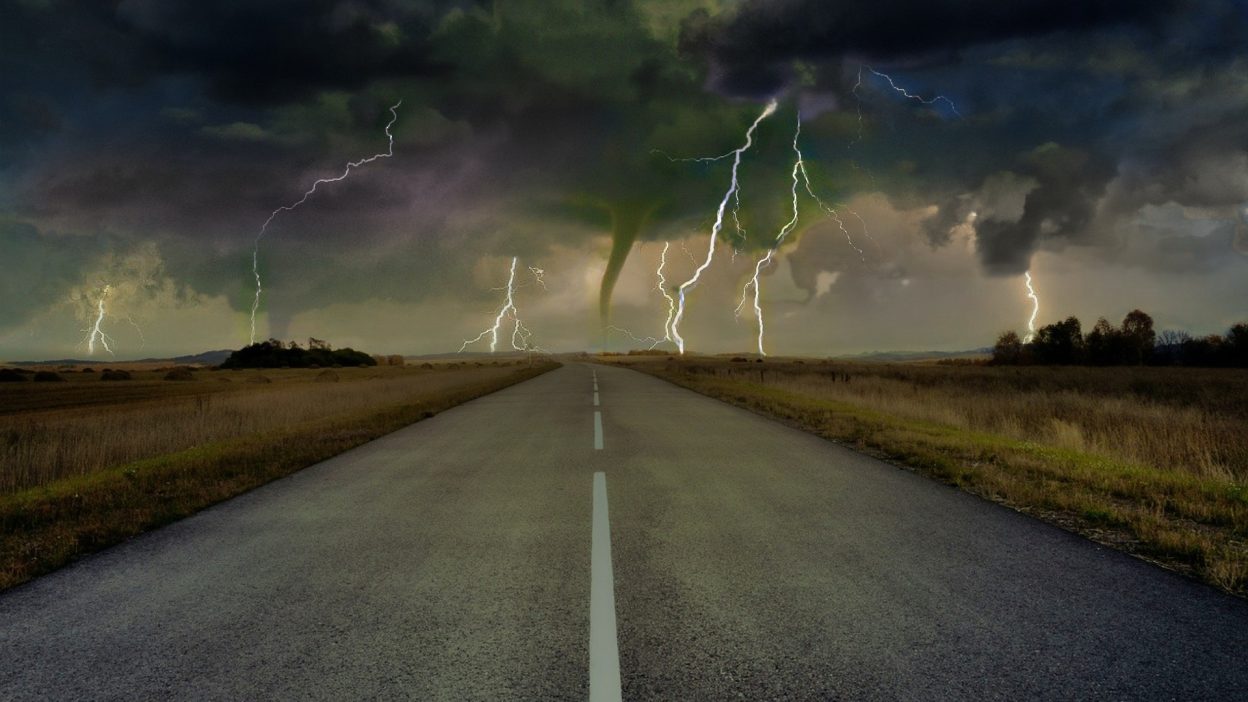Bangladesh’s Forgotten Tempest
1. The Storm That Struck Without Warning
In 1977, Bangladesh was no stranger to natural disasters, but few were prepared for the sheer devastation unleashed by the Madaripur-Shibchar tornado. Unlike cyclones that develop over time and allow for some preparation, this tornado struck suddenly, offering no chance for evacuation or defensive measures. The skies darkened, the winds howled, and within minutes, entire villages were reduced to rubble.
The region had seen storms before, but nothing of this magnitude. The tornado tore through Madaripur and Shibchar with an intensity that left locals in shock. Trees were uprooted, homes were shattered, and livelihoods were lost in the blink of an eye. The catastrophe that unfolded was one of Bangladesh’s deadliest tornadoes, yet it remains largely forgotten outside the affected communities.
2. A Tornado Unlike Any Other in Bangladesh’s History
Tornadoes are rare but not unheard of in Bangladesh. However, the Madaripur-Shibchar tornado stood apart due to its extreme intensity and the sheer scale of destruction. With winds likely exceeding 200 mph (320 km/h), it flattened entire neighbourhoods, leaving behind nothing but ruins. Unlike cyclones that primarily affect coastal regions, this tornado struck inland, catching people off guard.
Meteorologists now believe that the storm was a high-intensity EF4 or EF5 tornado, making it one of the most powerful ever recorded in South Asia. The ferocity of the storm was such that homes built of concrete were reduced to rubble, while lighter structures were simply obliterated. The unpredictability of its movement further worsened the devastation, ensuring that no area in its path was spared.
3. Death Toll, Injuries, and Shocking Statistics
- Fatalities: The death toll remains uncertain, but estimates suggest that at least 500 to 700 people lost their lives in the storm. Many were killed instantly as their homes collapsed around them.
- Injuries: Thousands were injured, with many suffering from severe wounds caused by flying debris, collapsing buildings, and strong winds. Some survivors were permanently disabled.
- Destroyed Homes: Over 20,000 houses were completely flattened, displacing tens of thousands of people overnight.
- Economic Impact: The financial losses were catastrophic. Crops were wiped out, businesses were destroyed, and the already struggling economy of the region suffered a severe blow.
- Long-Term Consequences: Even years later, many survivors struggled to rebuild their lives, with some villages never fully recovering from the disaster.
4. The Human Cost: Families Torn Apart
The Madaripur-Shibchar tornado was more than just a meteorological event; it was a humanitarian disaster. Families were ripped apart as loved ones were buried beneath the rubble. Parents searched desperately for their missing children, and in many cases, they were found lifeless, crushed beneath the debris.
The psychological trauma was immense. Many survivors suffered from post-traumatic stress, haunted by the memories of the storm. In a time before widespread mental health support, they were left to cope on their own. For the elderly, the loss was particularly devastating, as they had to watch everything they had built over a lifetime be wiped out in mere minutes.
5. Government’s Response: Help or Neglect?
The Bangladeshi government, struggling with economic difficulties at the time, was slow to respond. Relief efforts were disorganised, and many affected families had to rely on local communities rather than official aid. Emergency food, shelter, and medical care were scarce in the days following the disaster.
Foreign aid played a significant role in recovery, but the funds and resources often failed to reach the most affected areas. Corruption and inefficiency worsened the situation, leaving many survivors with little hope. This disaster exposed the country’s lack of preparedness for tornadoes, despite its experience with cyclones.
6. The Science Behind the Storm: What Made It So Deadly?
Tornadoes form under specific conditions, and the Madaripur-Shibchar storm was the result of a deadly mix of atmospheric instability, warm air currents, and intense pressure changes. Experts believe that this tornado was born from a supercell thunderstorm, which allowed it to grow in intensity rapidly.
What made it particularly lethal was its rapid formation and high wind speeds. Unlike cyclones, which can be tracked over days, tornadoes can develop in mere minutes. The storm’s unpredictability meant that it changed direction suddenly, leading to more casualties as people failed to escape in time.
7. Stories of Survival: Miracles Amidst Destruction
- The Man Who Clung to a Tree: One survivor recalled how he survived by holding onto a massive tree trunk for dear life. When the storm passed, everything around him was gone, but he remained miraculously unscathed.
- The Child Found in the Wreckage: Rescuers discovered a three-year-old child alive beneath the rubble of a collapsed home, despite being buried for hours. The child’s survival was deemed nothing short of a miracle.
- The Woman Who Was Carried for Miles: A woman was reportedly lifted by the tornado and thrown several miles away. She survived but suffered multiple injuries.
- A Mosque That Stood Firm: While entire villages were flattened, one mosque astonishingly remained standing, sparking religious interpretations among locals.
- The Teacher Who Saved His Students: A schoolteacher gathered his students into a storm shelter moments before the tornado struck. His quick thinking saved dozens of young lives.
8. Could This Happen Again? The Risk of Future Tornadoes
Bangladesh remains at risk of extreme weather events, and the possibility of another powerful tornado cannot be ignored. Climate change has increased the frequency of severe storms, making future tornadoes even more likely.
Today, there is better meteorological tracking, but tornadoes remain difficult to predict. The lack of proper infrastructure, storm shelters, and early warning systems means that if another tornado of this magnitude were to strike, the death toll could still be catastrophic.
9. Lessons Learned: How Bangladesh Can Prepare for the Next One
The 1977 tornado exposed critical weaknesses in Bangladesh’s disaster preparedness. Since then, efforts have been made to improve early warning systems, but much more needs to be done.
Key measures for future preparedness include:
- Investing in Tornado Shelters: Unlike cyclone shelters, dedicated tornado-proof shelters must be built in high-risk areas.
- Early Warning Systems: Advancements in radar technology must be implemented to detect tornadoes sooner.
- Public Awareness Campaigns: Educating communities on tornado safety can help reduce casualties.
- Stronger Infrastructure: Homes and buildings must be constructed to withstand extreme wind speeds.
10. A Storm That Bangladesh Must Never Forget
The Madaripur-Shibchar tornado of 1977 was a tragedy of epic proportions, but history has largely forgotten it. The lives lost, the families shattered, and the immense destruction must serve as a reminder that nature’s fury is unpredictable.
By learning from the past, Bangladesh can better prepare for the future. The country has made progress in handling cyclones, but tornadoes remain a silent but deadly threat. Ignoring this risk could lead to history repeating itself—with even more devastating consequences.
FAQs
1. How many people died in the Madaripur-Shibchar tornado?
The estimated death toll ranges from 500 to 700, though the exact number remains unknown.
2. What made this tornado so deadly?
It was likely an EF4 or EF5 tornado, with extreme wind speeds, rapid movement, and no warning.
3. Did the government provide adequate help?
The response was slow and insufficient, leaving many survivors to fend for themselves.
4. Can another tornado like this happen in Bangladesh?
Yes, Bangladesh is still at risk of powerful tornadoes, especially with climate change increasing storm intensity.5. How can Bangladesh prepare for future tornadoes?
By building tornado shelters, improving early warning systems, strengthening infrastructure, and increasing public awareness.




